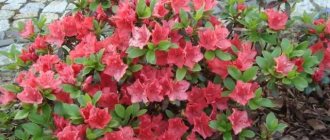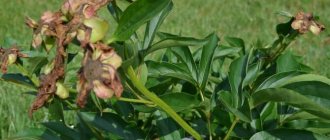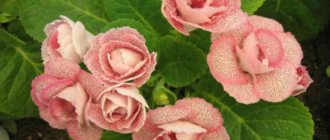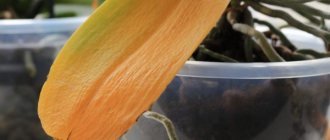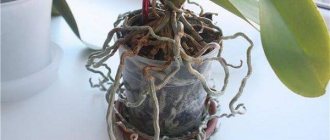What to do with the arrow?
In order for the orchid to continue to delight with its flowering, it is important to know what to do with the peduncle that remains after the plant has flowered. After it dries completely (it becomes yellow), it is cut off with a sharp tool. In this case, leave a stump of at least 1.5 cm in length. To protect the cut from rotting and pathogenic bacteria entering it, it is treated with wax.
Attention! The green part of the arrow is not cut off - the orchid will release a new one, spending a lot of energy. This is detrimental to the flower.
Phalaenopsis flowering dates
This plant can delight its owner with flowering at any time of the year, since it is not tied to any specific time. This process occurs in two stages: first, the inflorescences bloom, and then the buds that develop in parallel with them. Flowering lasts, subject to the correct maintenance conditions, for up to six months, after which a period of “rest” of similar duration begins. It is worth remembering that interfering with the life activity of a flower is undesirable - it will decide for itself whether the flower stalks will flourish or not (in the latter case, they will dry out, and then they can be cut off).
Don’t forget about the age of the plant - it directly affects the frequency and duration of phalaenopsis flowering: a younger plant shows more vigorous growth and blooms longer, while requiring less fertilizer. It should also be taken into account that the phalaenopsis orchid becomes mature enough to flower only at the age of 1.5–3 years. A sign of readiness is the presence of at least 5 large (adult) leaves on the plant.
What to do next with a faded plant?
As soon as the phalaenopsis has bloomed, it is placed on a bright, warm windowsill, protected from direct sunlight. It is recommended not to apply fertilizers during this period ; watering should be carried out as usual.
Care will consist of the following activities.
Inspection
- Thorough inspection of the root system.
Dry and rotten shoots are removed with sharp pruning shears pre-treated in potassium permanganate. An antiseptic is applied to the cut itself. Healthy roots are gray or green. - The green mass is examined for the presence of spotting and other signs of disease. They get rid of them so as not to completely infect the entire plant.
Watering
Orchid is a tropical plant. It needs moisture and regular watering . However, after it has flowered, their number is reduced, give it the opportunity to rest and gain strength. This period lasts up to 3 weeks. After which, the usual mode is returned.
To determine whether a plant needs water, pay attention to the root system. If it is a rich green color, then the flower has enough moisture. Water when they turn gray.
The procedure is carried out as follows:
- Use soft (settled tap or filtered rain) water at room temperature.
- Saturate the plant until the roots turn green again.
- Phalaenopsis is watered using the immersion method.
Attention! After watering, the water is completely drained, even from the pan. Because this leads to the roots starting to rot.
Phalaenopsis responds well to a warm shower . To do this, place it in a basin and pour warm water directly from a watering can. Then blot the outlet dry to avoid water stagnation in it.
Top dressing
Fertilizers are applied to the orchid not only during the flowering period, but also after it.
For the plant to restore the lack of nutrients. In this case, the dosage is reduced by 2 times. Regular application of special compounds promotes the active growth of phalaenopsis and further abundant, bright flowering. Fertilizing is applied during every third watering . To do this, complex formulations containing:
- potassium;
- phosphorus;
- minimum amount of nitrogen.
The following fertilizers are suitable for orchids::
- Bona Forte;
- Mister-color;
- Kemira Suite.
They contribute not only to the growth of green mass, but also to the formation of buds. Before applying this or that fertilizer, the plant is watered abundantly.
Important! Fertilizers are applied strictly following the dosage specified in the instructions.
There are also compositions for foliar application . For example, "Doctor Folly". This is an aerosol that is sprayed onto the leaves. It stimulates the development of the peduncle and is a preventive measure against chlorosis and drying out of the leaves. Do not allow the composition to get on the flowers themselves, this will lead to their death.
After flowering, the amount of fertilizing is reduced during the plant's dormant period (about 3 weeks).
Temperature
The orchid prefers warm climates . The optimal temperature for it is:
- in summer 25°C;
- in winter - not lower than 18°C.
The difference between night and day temperatures (fluctuation of 5 degrees) stimulates the growth of phalaenopsis and the laying of new buds. However, prolonged lowering should be avoided, otherwise the leaves will begin to crack and dents will appear on them.
Fresh air is also beneficial. But they protect the flower from drafts .
Humidity
Comfortable humidity for an orchid is 50-70%. If the flowers dry out and fall off, and the phalaenopsis itself wilts and changes color, then the indicator is too low for it. This is especially true in hot summer or during the heating season.
To help the plant, humidity is artificially increased. Use wet expanded clay. An air humidifier or small containers of water that are placed around the flower are also suitable.
Lighting
Phalaenopsis is a light-loving plant. However, from direct sunlight he gets burns, which appear in the form of white spots. Diffused light is optimal for growing .
Attention! In a well-lit place, abundant and long-lasting flowering is achieved.
Lack of light is determined by the following signs:
- leaves stretch;
- turn pale;
- turn yellow;
- wither.
This is especially true in winter, when daylight hours are short. Daylight hours for phalaenopsis are 20 hours, regardless of the season .
In order for the plant to feel good, special phytolamps are installed for it. In summer, it is recommended to shade the orchid using a regular landscape sheet or a piece of plastic.
Features of the flowering period
The flowering of exotic plants is accompanied by some peculiarities, most of which are determined by its origin. First of all, they relate to the conditions of keeping the orchid and caring for it.
Important! Habit is important to a flower. If it feels comfortable in any place in the house, it is not recommended to move it - this will negatively affect the condition of the orchid.
What affects flowering time?
The timing of flowering is greatly influenced by the conditions under which phalaenopsis is kept, including watering, humidity, temperature and lighting. In addition, the frequency and composition of fertilizing have a certain effect.
What conditions are required?
It is recommended to place the pot with the plant on windows facing north or east; When displayed on windows facing south, a mandatory measure is to create a shadow for the flower in order to protect it from burns. The optimal ambient temperature can fluctuate between +18...+25°C; in winter, the lower value drops to +15°C. Humidity – not lower than 30% and not higher than 40%.
The orchid is watered as the substrate in which it grows dries. The dryness of the latter is determined not by its top layer, but by loosening. In addition, once a month the phalaenopsis needs to “take a shower.” After this procedure, the leaves are wiped dry to prevent damage or disease; for the same reason, watering leaves is not practiced. Feeding during the flowering period is carried out once a week, after its end - once a month.
Important! If the pot is transparent, the need for watering is determined by the roots of the flower: roots saturated with water have a bright green color, and if there is a lack of moisture, they turn white.
Possible problems
After phalaenopsis blooms, a number of problems may appear:
- delay of subsequent flowering;
- wilting of leaves;
- drying out of the entire plant.
All of them are a consequence:
- location too bright;
- frequent, abundant fertilizing;
- trimming the flower stalk before it dries out;
- the arrow is removed too short (less than 1.5 cm).
Orchid is very demanding to care for. Therefore, it is worth paying special attention to it. As soon as signs of a particular problem are detected, it is immediately solved.
When will Phalaenopsis bloom next?
From one orchid bloom to another it can take from several months to 2-4 years. First of all, the orchid needs to grow - grow new leaves and build up a root system.
Some varieties grow 1 leaf per year, others 2-3. If Phalaenopsis only blooms, then one day, when the axils of the leaf blades end, it will grow a peduncle from the growing point. Then you will have to wait until the orchid grows a baby and it reaches flowering age.
If after a year a new peduncle has not appeared, we need to look for the reason for this behavior of the plant. It could be:
- Bad light.
- No temperature difference day/night.
- Overfeeding orchids in general, and nitrogen fertilizer in particular.
- High night temperatures: >24°C.
In the case when all indicators are normal, and the peduncle is not shown, you can create stressful conditions for Phalaenopsis:
- do not water for a couple of weeks;
- Next, put it in a dark place for a week;
- water the plant generously: soak the pot with the orchid for 2-3 hours in a container filled 2/3 with water and fertilizer, where phosphorus and potassium predominate;
- Place the suffering flower on a sunny windowsill and ensure a temperature difference of 6-8 degrees.
After 3-4 weeks, as a rule, a peduncle appears. An exception may be those varieties that bloom once every 1.5-2 years.
When and how should it be replanted?
Phalaenopsis is replanted no more than once every 4 years . There are a number of reasons for carrying out the procedure:
- rotting of the root system;
- compaction of the substrate;
- numerous aerial roots;
- unstable position of the plant in the pot;
- a large amount of green mass.
So, the compacted substrate is replaced with a looser one. To ensure that the root system receives sufficient oxygen.
Transplantation is carried out in spring or summer by transshipment . Proceed as follows:
- water the orchid abundantly;
- remove the flower so as not to damage the root system;
- transplant the plant into a new container with nutrient soil;
- the voids at the roots are not compacted so as not to injure the underground part;
- Watering is carried out no earlier than after 7 days, allowing the wounds on the roots to dry and heal.
Additional ventilation holes are made in the walls of the pot, increasing the flow of oxygen to the root system.
If it is necessary to completely change the substrate and cut off the roots (for example, they have begun to rot), then in this case the orchid is placed in the same pot.
Reference! They prefer transparent pots, this provides an additional opportunity to monitor the roots of the plant.
Below is a visual video about transplanting phalaenopsis:
With proper care, phalaenopsis will delight you with its abundant flowering for a long time. It is worth paying special attention to the plant :
- observe the temperature regime;
- maintain humidity;
- provide the orchid with the right amount of light and nutrients.
Then beautiful flowers will not keep you waiting.
Features of care during the rest period
When the dormant period begins, fertilizers are completely excluded from the “diet” of phalaenopsis, and the interval between watering increases even more. Lighting should be diffused, and close contact with heat sources should be excluded.
Learn about planting and caring for orchids at home.
Phalaenopsis, popular among many lovers of house plants, is ready to please with its beautiful flowering. However, the help of the owner is important to him, who will create comfortable conditions for his flower both during the flowering period and during dormancy.
Replanting after flowering
The best time to transplant phalaenopsis is after flowering has ended. This is done only when necessary. Orchids require replanting if:
- The condition of the substrate has deteriorated, it has caked;
- The root system of the plant is cramped in the pot;
- The roots of the plant are diseased or rotten.
Before replanting, choose a pot such that the plant’s roots fit freely in it.
You also need to purchase a substrate for orchids. You can mix it yourself. To do this, take in equal parts:
- Pine bark;
- Dry sphagnum moss;
- Charcoal;
- Fine expanded clay with the addition of foam chips.
A layer of brick chips is placed at the bottom of the pot for drainage.
The orchid is carefully removed from the pot, and the substrate is shaken off the roots. If the roots are dry or rotten, their diseased and dead parts must be removed. Next, the root system of the plant is placed in a pot.
A little substrate is poured on top, and pieces of it are distributed between the roots with a stick or pencil. This is done until the space between the roots is filled with substrate.
The transplanted orchid should sit tightly in the pot. It is placed in partial shade and not watered for 2-3 days.
How to stimulate flowering?
You can stimulate re-blooming of orchids by creating stressful conditions. You can do this in the following ways:
- Severely limit watering. Sometimes, after complete drying, the plant begins to actively develop flower stalks. But moderation should be observed. Drying too much can lead to irreversible damage to the root system.
- Create a difference between day and night temperatures. In some cases, significantly lower night temperatures stimulate flowering. To do this, you can simply open the window over the plant at night.
Orchid arrow: to trim or not
Rhododendron has faded: what to do next
After the orchid blooms, you can cut off the peduncle. The condition is mandatory for Cumbria, Cymbidium and Oncidium orchid varieties. A larger number of kidneys does not guarantee a positive result. The orchid has faded, what should I do with the arrow? In Miltonia, it is recommended to clean the pedicels “in advance” during the period when they begin to directly wither. There is no need to wait until the flowers fall completely.
Difference between partial and complete removal
Pruning of a house plant is required only when the arrow is dry. If there are still live inflorescences on it that have not bloomed, it is better not to touch them and wait for new flowers to appear. It is important to remember that the plant accumulates nutrients in pseudobulbs. In general, plants with faded stems look unsightly.
Removing the peduncle is easy. After the orchid has faded, it is trimmed with a knife, scissors or pruning shears. Tools must be disinfected first. It is recommended to leave the buds about 1 cm and treat the slices with chopped charcoal or other means. The orchid has faded, what should I do next? Some experts suggest “sealing” areas with natural beeswax.
It is important to know! Most orchids have hollow stems. When watering after removing the pedicels, it is important to be careful, because if water gets inside the stem, this can lead to rotting and fading of wilted orchids.
If there are buds on the cut arrows, they can be used as planting material that is propagated by cuttings.
Partial cutting
Partial reduction of the arrow is one of the possible solutions. The method is best suited for phalaenopsis. Studying the stems will reveal the presence of “dormant buds” in plants, from which “babies” and lateral inflorescences appear. In this case, experienced flower growers cut the stem after it has become dry, but not completely, but at some distance from the buds. The result of flowering is new leaves and aerial roots.
Partial circumcision
Interesting! A dry and cool microclimate will increase the likelihood of bolt formation, while a moist and warm microclimate will promote reproduction.
If a wilted phalaenopsis orchid dries out, its stem will begin to turn yellow. In this case, it is removed to the lowest shoots.
